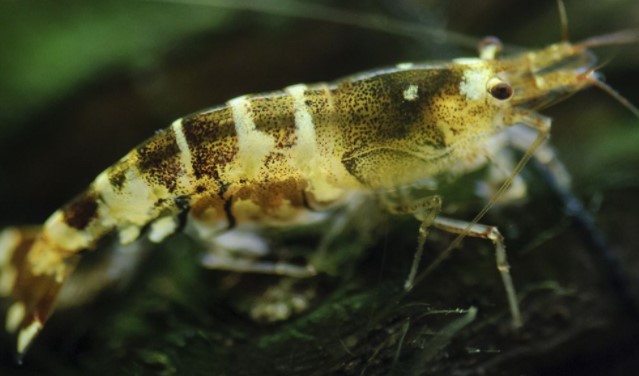Shrimp is a very popular food in many countries. People catch them in huge quantities, and many fish and marine animals willingly feed on them, so that only their phenomenal fertility saves them from the complete disappearance of these creatures.

- The body size of adult shrimp, depending on the species, is on average 2 to 35 centimeters.
- Many types of shrimp are hermaphrodites, that is, during their life they sometimes turn from males to females.
- Jews are forbidden to eat shrimp, like other marine arthropods. In Islam, there is still no unambiguous point of view regarding eating shrimp.
- Shrimp is a low-calorie food rich in calcium and protein. In addition, these animals are a good source of cholesterol.
- Chinese artist Qi Baishi became famous for his canvases depicting shrimp.
- Shrimp can live in both sea and freshwater.
- The largest shrimp on the planet is the black tiger shrimp. With a body length of 35 cm, the weight of one shrimp can reach 650 grams.
- If the shell of frozen shrimp is orange or red, they have already been cooked before freezing, that is, they do not need to be re-cooked, it is enough to defrost and reheat to the desired temperature.
- Shrimps constantly molt, shedding too tight shells and growing new protective shells for themselves.
- Shrimp was a popular dish already in ancient times – ordinary people of Ancient Greece and the Roman Empire preferred to bake and fry them, rather than boil them. The popularity of shrimp is due to the ease of catching them, because crustaceans are found in shallow water, and they could be obtained even with a bucket of water.
- You only need to cook shrimp for a few minutes, otherwise, their meat will turn from tender to rubbery.
- The noise emitted by a flock of small shrimp can confuse the sonar of a submarine – a hydroacoustics will hear nothing but a solid curtain of noise.
- The Snapping Shrimp is a tiny but loud ocean dweller. Due to the special structure of the claws, they can emit a sound with a power of 200-220 dB. The shrimp’s deafening click is capable of killing small fish, so it uses this skill to hunt.
- The pigment in shrimp heads has a beneficial effect on the heart and blood vessels, is used to prevent strokes and blood pressure problems, and even, it is claimed, allows you to maintain youth.
- During the warm season, the shores of Japan glow in the dark – this is due to the sea fireflies, luminescent shrimps that live in the sand and are clearly visible during high and low tides.
- The ancestor of modern shrimp, Anomalocaris, lived in the oceans of the Earth almost 500 million years ago.
- Shrimp eyes are placed on special processes and can move in opposite directions from each other. Their vision is provided by 16 types of cells responsible for the perception of color (in humans, for comparison, there are only 3 types of such cells).
- The heart of the shrimp is in her head.
- Each cell of a shrimp contains 90 pairs of chromosomes (in humans, only 46).
- Shrimp live on average from one to six years, but there are also individuals that live up to 20 years.
- Dried shrimp caviar remains viable for several years – if placed in suitable conditions, healthy offspring will emerge from the eggs.
